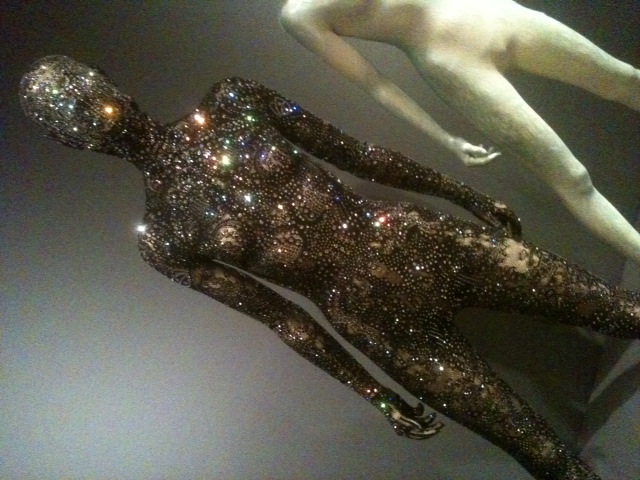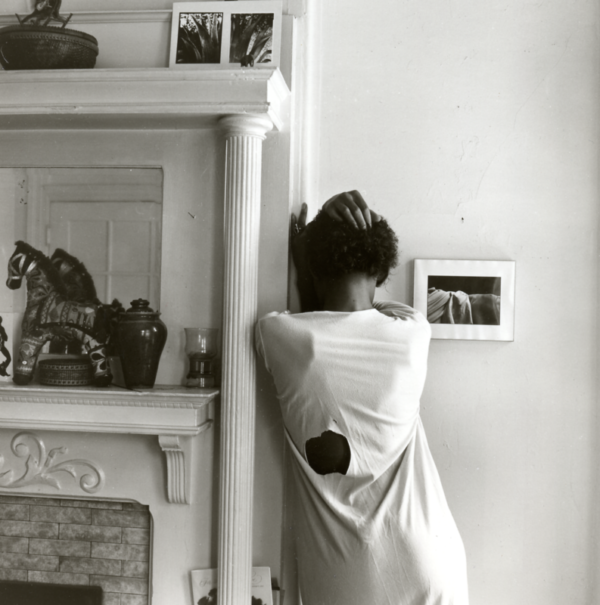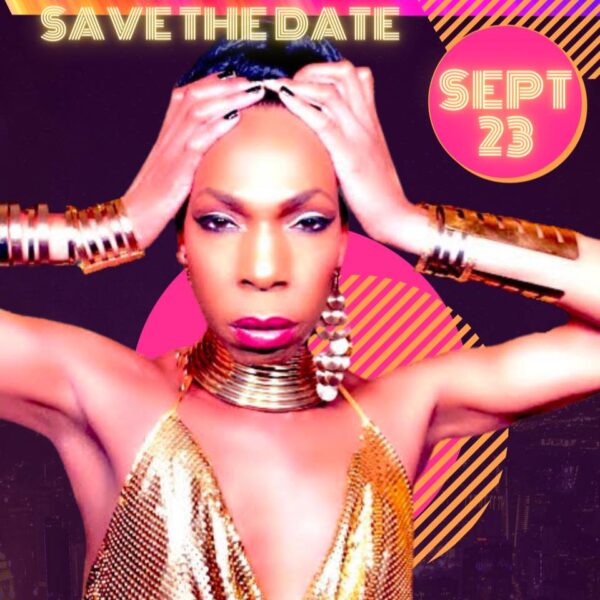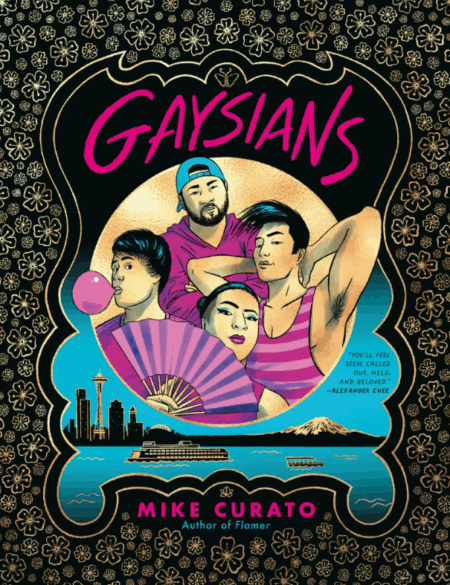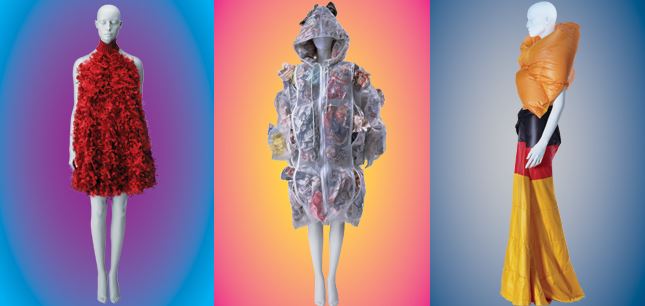
“Future Beauty: 30 Years of Japanese Fashion” opened at Seattle Art Museum this week for a summer long visit.
Dear SAM,
I haven’t paid much mind to your advances lately, frankly, because they’ve been less-than-igniting. But, thank you. Thank you for being one of the few (like, two) museums to bring FUTURE BEAUTY: 30 Years of Japanese Fashion to North America. Alright, sir, you’ve got my attention now – I’ll let you buy me a drink.
Tell me about Kinsai Yamamoto’s Ziggy Stardust costumes for David Bowie or Kenzo Takada’s Jungle Jap absurdity or the beginnings of gyaru and why you, “can’t live without men.”
“We start this journey in 1983.” “Wait, what? Why 1983?” I thought to myself. “There are so many influential designers from Japan who pre-date the early ’80s. The Kyoto Costume Institute’s Director Akiko Fukai tells you why…
1983 is a storied year when the day-glo prep and polish of Western fashion was haunted by ghosts cloaked in shredded sheers and mangled, yet artfully-managed, geometry in black and white. Was this supposed to be a joke? Who were these bogey men of shadow and shape, and why were they invading our champagne wishes and caviar dreams?
What we didn’t realize was this new garde, lead by Issey Miyake, Rei Kawakubo, and Yohji Yamamoto, was changing our perception of what fashion could be. This is why we start in 1983 with exhibit section, “In Praise of Shadow”, with the garments – and runway clips – to prove it. The seeding of these ideas and aesthetics have grown and matured over the decades to become near garden variety fashion. But that’s the magic: You wouldn’t know these garments are thirty years old. They’re as fresh today as they will be in another thirty.
This collection provides many gasps, head scratches, and fashion quandaries, so a key note to remember while wandering: At several millennia old, two centuries in isolation, and a few decades voraciously gobbling up Western popular culture, the Japanese have evolved in a way that can seem innocently alien. Weirdly, wonderfully, alien. Not once did I feel any pretension from the deliberate arrangement and applique of brocade bodice breast cups nor did something designed to within an inch of it’s life feel anything more than a happy accident.
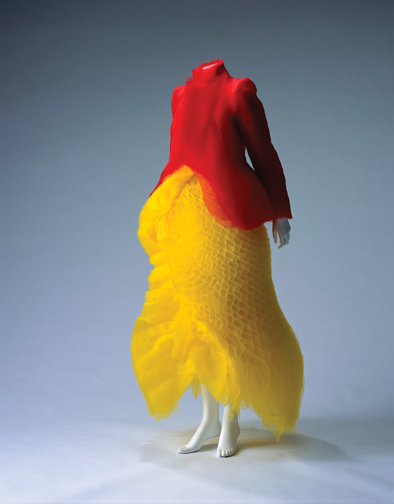
Junya Watanabe, Autumn/Winter 2000
Collection of the Kyoto Costume Institute, photo by Takashi Hatakeyama
Setting the tone for the exhibition’s transition, “Tradition and Innovation”, Hiroaki Ohya’s “The Wizard of Jeanz” is a collection of books inspired by, yes, “The Wizard of Oz”. Each bound volume contains a pop-up garment adapted from a corresponding chapter of the story. Ohya has said, “Fashion should be more about stories and fantasies that transport us from the daily grind.” He’s absolutely right.
So is Junya Watanabe with his flat-packing polyester folly of honeycomb garments (You know those holiday decorations that accordion out into a Jack-o-Lantern or Santa’s jolly belly? Yeah, like those…) or seamless SOMARTA (Tamae Hirokawa) bodysuits dripping in crystals… one of which, as the collection curator gleefully points out, was for that Gaga girl. On that, it’s surprising how many garments here are truly unisex. Japanese designers don’t celebrate the shape of a body, in fact they do their damndest to hide or reshape the body – see: Jun Takahashi’s stealthy UNDERCOVER series or Rei Kawakubo’s gingham-checked spandex maxi dresses of Quasimodo lumps and bumps.
Kawakubo is a name you’ll see repeated throughout the show. She founded Comme des Garçons in Tokyo 1973 (not a French label, y’all). Since then, CdG has been a petri dish for innovative designers – all of whom you’ll see in this exhibit: Junya Watanabe, Tao Kurihara, and Fumito Ganryu to name a few. As an obvious heavy-hitter in this movement, Kawakubo is honored with her own annex in the exhibit as are each of her contemporaries (and/or proteges, and/or lovers) Yohji Yamamoto and Issey Miyaki.
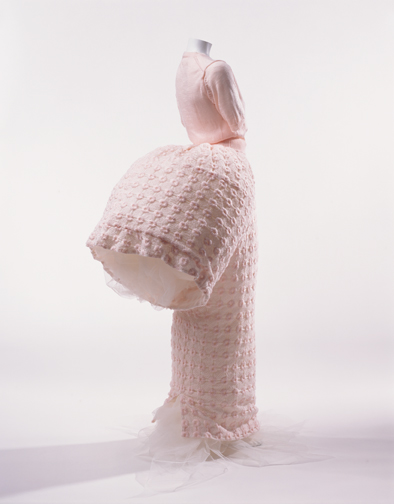
Comme des Garçons (Rei Kawakubo), Autumn/Winter 1995 Collection of the Kyoto Costume Institute, photo by Takashi Hatakeyama
Miyaki, a long-time personal fashion hero, is near Willy Wonka in the way he experiments with high- and low-concept ideas through any of his eleven fashion lines. Do yourself a favor and give him some research. FUTURE BEAUTY brings pieces of from his award-winning collection “132.5” that I’ve wanted to see with my own eyes: What looks to be flat origami shapes, unfolds to become wearable garments. Yohji Yamamoto is no different. Through the years he has pushed boundaries and hybridized science and fashion with an expert’s – or mad scientist’s – hand.
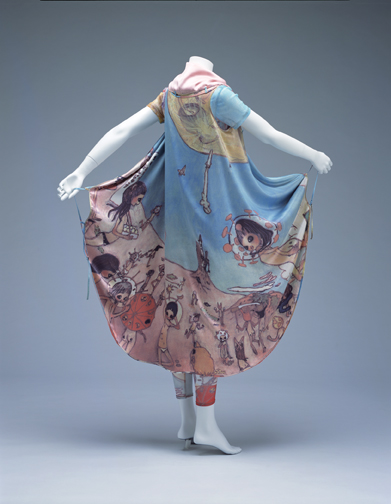
ISSEY MIYAKE ( Naoki Takizawa) + Aya Takano / Kaikai Kiki Autumn/Winter 2004 Collection Collection of the Kyoto Costume Institute,Gift of ISSEY MIYAKE INC.
The exhibit shows you some far-out frocks you may think are unwearable, but “Cool Japan” shows you how quickly these deconstructed ideals and aesthetics have embraced by mainstream culture. Here come your FRUITS! Your Hello Kitty, gothic Lolitas, and glo-stick fat-pant candy costumes… but done the right way, not the trademark mall store, dress-for-less way. It goes further: Yamamoto designed a very successful line for Adidas, Wikipedia tells me Comme des Garçons grosses over $180 million USD per year, and Eiko Ishioka’s drug-dream costuming for film has won multiple Academy Awards (Oh, wait. Eiko Ishioka wasn’t featured one bit in this collection. It’s a shame, but that’s okay – she deserves an exhibit of her own, look her up, you’ll see what I mean.)
That all said, SAM, you were a great date. You grabbed my attention and kept it through to the end. You’ve reassured me that the strangest ideas from alien brains can indeed change the way the world perceives what is “normal”. Each piece in this collection is thoughtfully curated and tells an astonishing story you never knew was written. Keep bringing to me – and this City who wants (needs) it – exhibitions like this and I’ll consider a second date. Oh, and that kiss you snuck when we said our fare-thee-wells – I’ll allow it.
*******************************************************************
FUTURE BEAUTY: 30 years of Japanese Fashion is open now and runs through September 8th in the Simonyi Special Exhibition Gallery, Seattle Art Museum downtown.
Jordan Christianson is couturier and stylist for Seattle’s nightlife and performance community, armchair fashion historian, and man behind the curtain for Jonquil & Mr Black.


